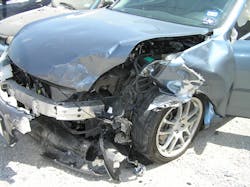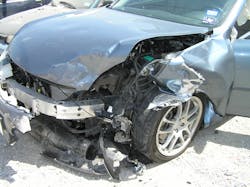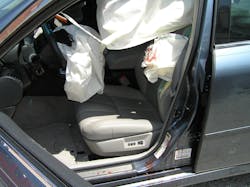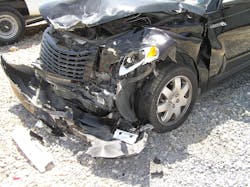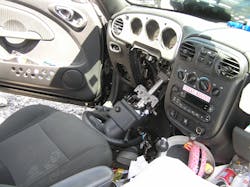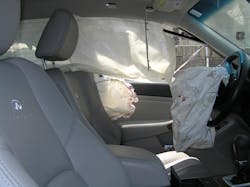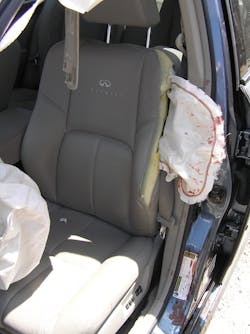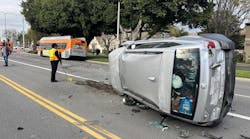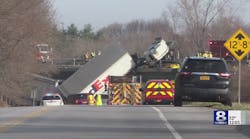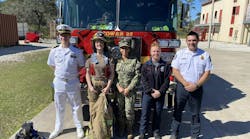Topic: Occupant mechanism-of-injury potential
Objective: Understand how exterior and interior vehicle damage can serve as clues as to potential occupant injury
Task: “Read” a crash-damaged vehicle to create a mental list of potential occupant injury mechanisms that are based on these physical findings
The vast majority of responders to vehicle collisions have some degree of medical training (e.g., first responder, EMT-B or paramedic). As such, you must realize that you are exposed to a lot of physical “evidence” while on scene. If you proactively look for it—called “reading the wreck”—you can get clues about a patient’s injury potential even before you make patient contact. Exterior and interior images of several crash-damaged vehicles that are included below illustrate these size-up and assessment teaching points.
In Figure 1, an Infiniti G35 sedan shows moderate off-set frontal crash damage. Upon approaching the vehicle, a wise rescuer already would be thinking about possible mechanisms of injury for any occupant who was involved in a frontal crash, particularly the driver.
From strictly safety, rescue and extrication points of view, concerns about the vehicle itself begin to be factored into the rescue size-up: Is the damaged vehicle in “Park”? Is the engine off? How will the vehicle be stabilized? Is anyone inside of the vehicle? Is there interior access, or are the occupants trapped? Is everyone out and ambulatory?
You also note a splattering of fresh blood on the deployed airbags, rocker area and base of the B-pillar. It isn’t a large quantity of blood, and it isn’t pooled in one spot; it just is scattered about on this side of the vehicle. Look to see whether any drops are on the roadway. The visual evidence indicates you that should be looking for an occupant who most likely was the driver. Your patient now most likely is ambulatory and has some degree of head or facial injury that’s enough to cause bleeding from the mouth or nose. Once this patient is located and assessed, his/her facial injuries will reinforce the clues that you observed from the vehicle itself.
Appearances can deceive
Rescuers must be careful about the exterior vehicle damage as it relates to patient injuries. Officers who are in charge of an incident must be keen not to judge a book by its cover—the exterior of the vehicle. Exterior appearances of vehicle damage or lack thereof no longer are reliable/telltale clues as to what occupants went through during the crash sequence. Outward appearances that the vehicle gives must be balanced with any supplemental restraint system use and the physical damage that’s inside of the vehicle, particularly within the front and rear seat occupant areas, to come up with an accurate prediction of an occupant’s potential mechanisms of injury.
